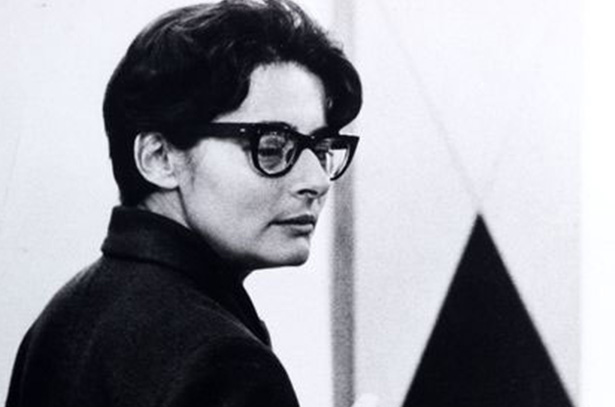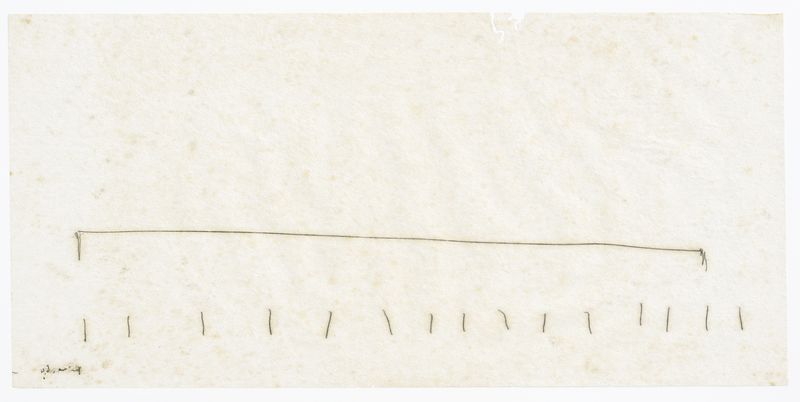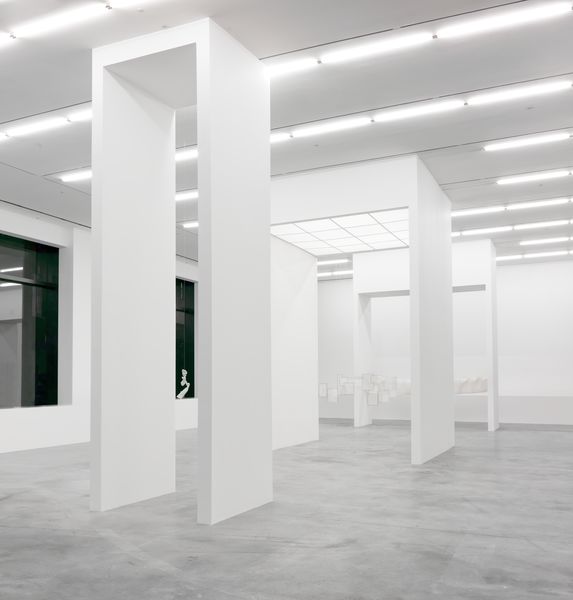monotype, also called MONOPRINT, in art printmaking, a technique that generally yields only one good impression from each prepared plate. Monotypes are prized because of their unique textural qualities. They are made by drawing on glass or a plate of smooth metal or stone with a greasy substance such as printer's ink or oil paint. Then the drawing is pressed by hand onto a sheet of absorbent paper or is printed on an etching press.
– The New Encyclopaedia Britannica, viii (Chicago: Encyclopaedia Britannica, 1998), 266
Curated by Taisa Palhares and organised with Olivier Renaud-Clément, Hauser & Wirth London is pleased to present an exhibition of Mira Schendel's Monotypes. This focused presentation examines a body of work that formed an essential and enduring part of Schendel's wider practice. 'Monotypes' follows acclaimed presentations of Schendel's work at Tate Modern, London, England (2013), Fundação de Serralves, Museu de Arte Contemporânea, Porto, Portugal (2014) and Pinacoteca do Estado de São Paulo, Brazil (2014).
Schendel is one of the most significant artists to emerge from South America during the twentieth century. After spending her early life in Europe, she emigrated to Brazil in 1949 and settled in Sao Paulo in 1953, a city in the midst of postwar artistic and social revolution. This desire for innovation and expansion encouraged Schendel to develop an experimental attitude towards her work, and her practice soon evolved from painting and drawing to the more conceptual works on paper that form part of the Monotypes series. These highly original works are key to understanding Schendel's larger poetics, as she experiments with language and symbols, and draws on sources as diverse as Zen Buddhism, Concrete Poetry and Bergsonian theories of time and space in the development of this body of work.
The Monotypes were initiated in direct response to the physical materiality of the thin Japanese rice paper that Schendel worked on. She attempted to create works on paper using traditional methods, but found the paper's thinness unsuited to drawing and painting so adapted conventional printmaking techniques. Schendel's monotypes, unlike those produced using the traditional method, are made by hand and are considered 'printed drawings', or 'transfer drawings', as opposed to prints. She covers a glass or acrylic surface with oil paint before laying a sheet of the rice paper over the top and tracing lines and shapes with her fingertip, the side of her hand or a tool; the fragile drawing appearing through friction between her hand and the paper. Schendel's practice requires discipline whilst also allowing for a great deal of spontaneity, since the smallest mark on the paper instantly becomes permanent. Her highly intuitive and sensitive series explores the qualities and possibilities of the monotype technique, as she records her immediate experience as a series of symbols, or lines, shapes and letters that possess an intense aura and corporeal presence.
Begun in 1964, the Monotypes are divided into several 'families' and given nicknames. The earliest of these is a group of works characterised by the variation of thick and thin lines that refer back to her own earlier abstract paintings. Forms such as the circle, the spiral and the open rectangle recur, as do the letters A, B and P. Later groups play with symbols and shapes; in 'Arrows/Flexas', arrows on the paper point outwards at opposing angles, disrupting the composition of the drawing itself. In 'Architectures/Arquiteturas', Schendel connects interrupted lines to build mini architectural structures that seem to delicately balance on the plane of paper.
Schendel's Monotypes were produced in small groups, representing sudden bursts of activity and areas of particular interest. At the end of 1964 she began the 'Writings/Escritas' group, focused on the materiality of language and its origin. These works are inspired by Stockhausen and are renowned for their use of several languages, including German, French, Portuguese, Croatian and Italian. Her preoccupation with language as a self-analysing structure continues throughout the Monotypes. In the 'Letraset' works, Schendel uses sequences of patterned dots that resemble morse code or brail, overlaid with individual Letraset letters, which begin to articulate themselves as if communicating in a semi-abstract language.
The Monotype works occupy a realm between opacity and translucency, and accident and deliberation, with an effect of shifting meanings and experiences. These calligraphic marks recall a musical score or poetic verse, calling attention to principles of time, space and movement within a static work. Schendel creates rhythmic images with a palpable sense of depth and perspective.
The exhibition includes two hanging installations, 'Variantes II (Variants II)' (1965) and 'Trenzinho (Little Train)' (ca. 1965), as well as an important paper sculpture, 'Droguinha (Little Nothing)' (1960s). The same Japanese rice paper features in each of these works and undergoes further experimentation. Both installations are created by suspending sheets of paper from the gallery ceiling and walls. In 'Droguinha (Little Nothing)', the paper is twisted, knotted and braided to create an object that borders drawn line and sculpture. Bringing these sculptural works together with the Monotypes offers an in-depth study of an experimental period of Schendel's career, and invites closer inspection into the ethereal and complex Monotypes.
'Monotypes' is accompanied by a new publication devoted to the Monotypes series, with a text by Taisa Palhares, published by Snoeck with Hauser & Wirth.






































